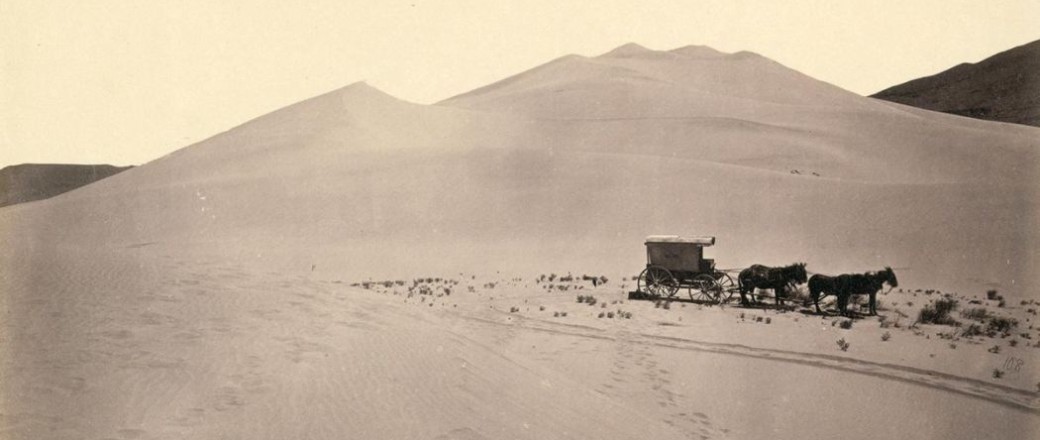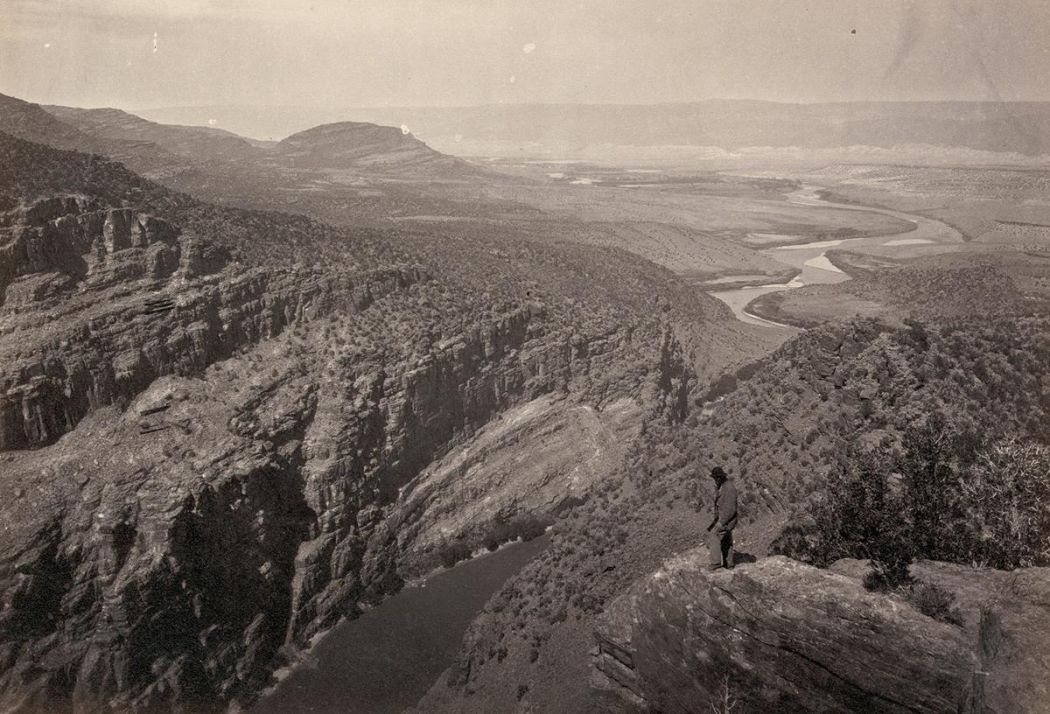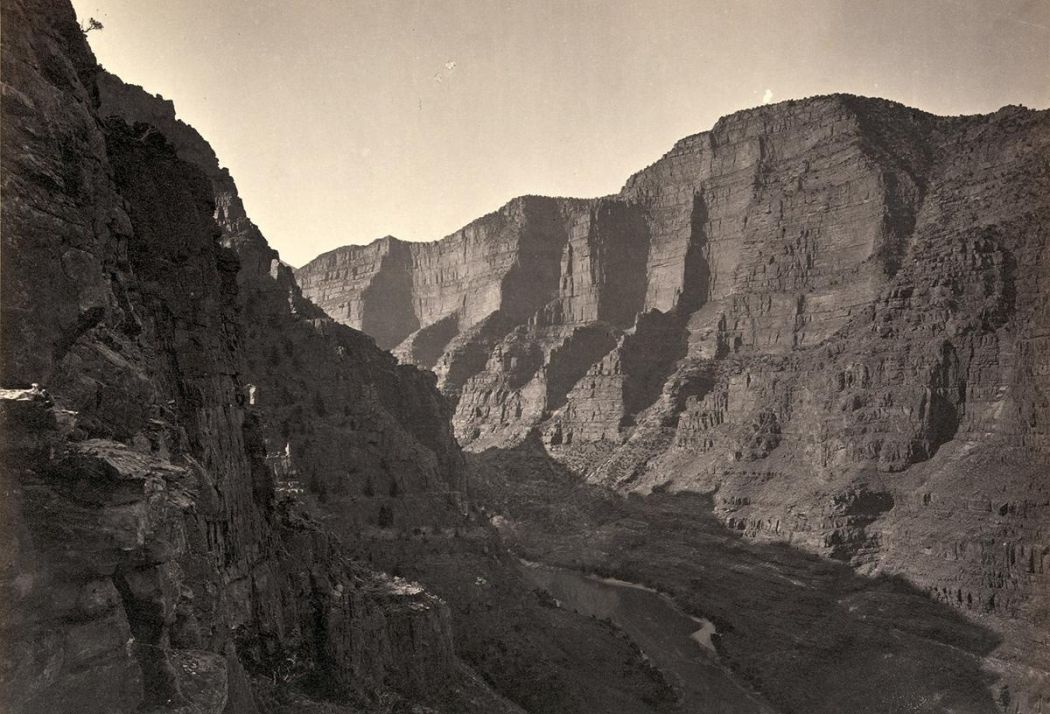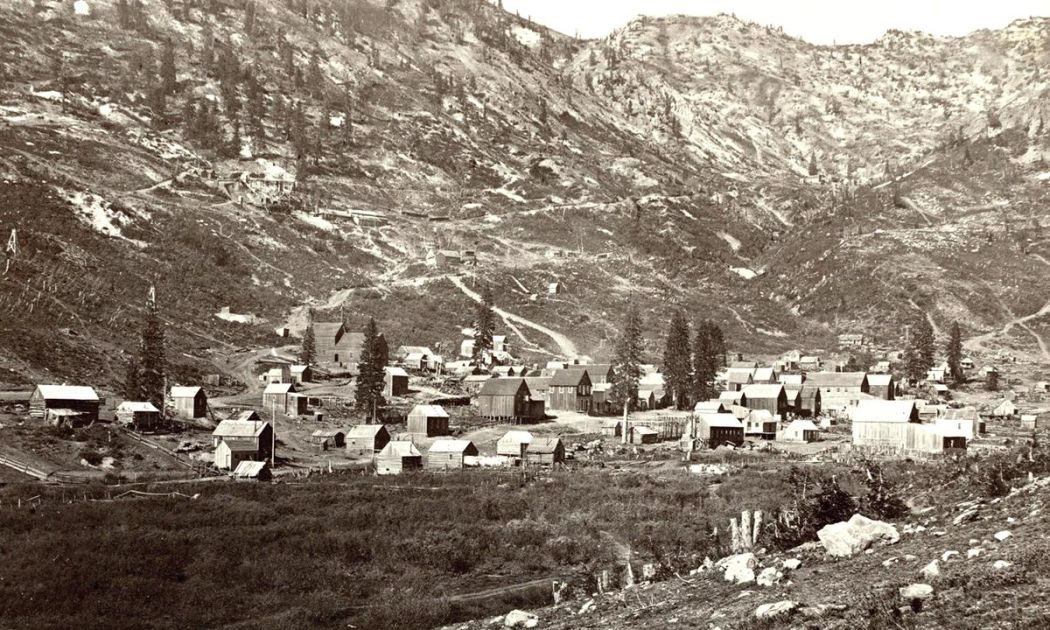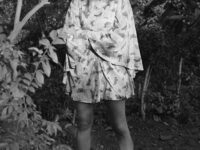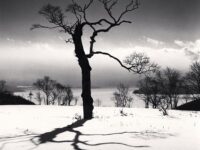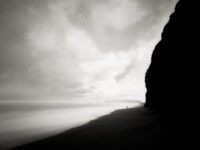Timothy O’Sullivan (1840 – 1882) was official photographer on the United States Geological Exploration of the Fortieth Parallel under Clarence King. The expedition began at Virginia City, Nevada, where he photographed the mines, and worked eastward. His job was to photograph the West to attract settlers. In so doing, he became one of the pioneers in the field of geophotography. O’Sullivan’s pictures were among the first to record the prehistoric ruins, Navajo weavers, and pueblo villages of the Southwest. In contrast to the Asian and Eastern landscape fronts, the subject matter he focused on was a new concept. It involved taking pictures of nature as an untamed, pre-industrialized land without the use of landscape painting conventions. O’Sullivan combined science and art, making exact records of extraordinary beauty.
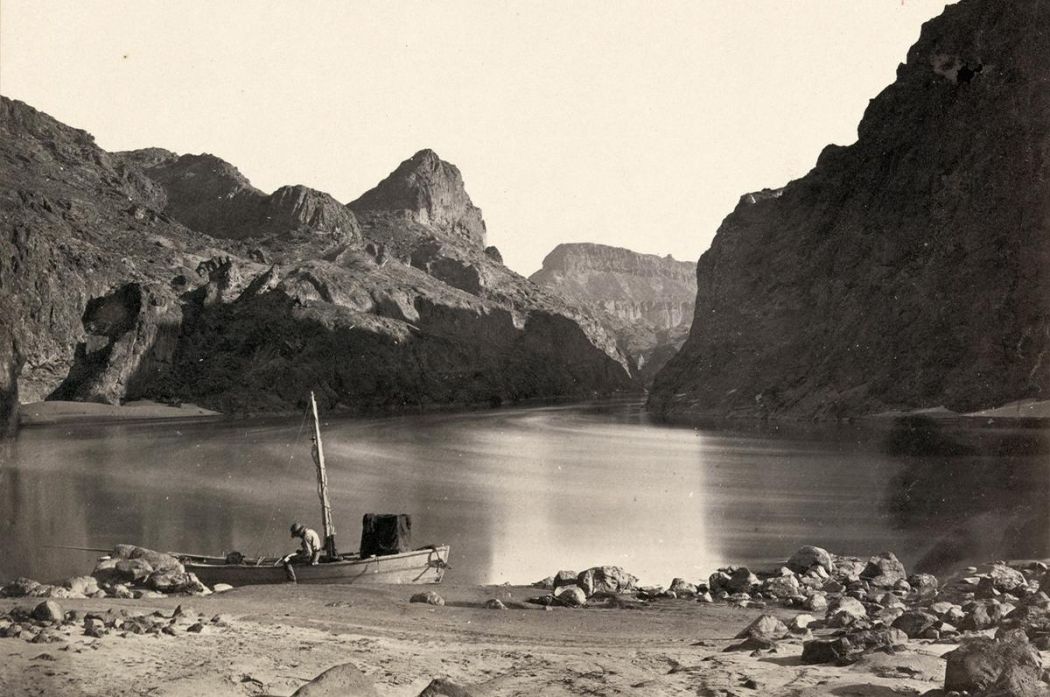
A man sits in a wooden boat with a mast on the edge of the Colorado River in the Black Canyon, Mojave County, Arizona. At this time, photographer Timothy O’Sullivan was working as a military photographer, for Lt. George Montague Wheeler’s U.S. Geographical Surveys West of the One Hundredth Meridian. Photo taken in 1871, from expedition camp 8, looking upstream. # Timothy O’Sullivan/Library of Congress

Pah-Ute (Paiute) Indian group, near Cedar, Utah, in 1872. # Timothy O’Sullivan/National Archives and Records Administration
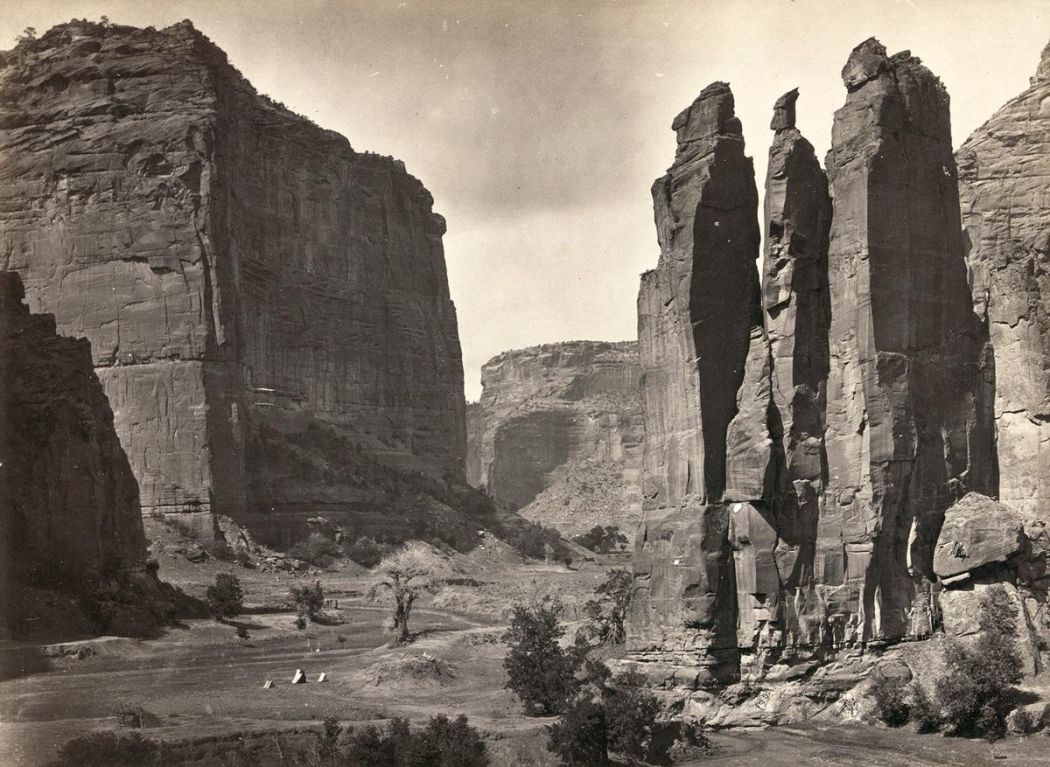
Panoramic view of tents and a camp identified as “Camp Beauty”, rock towers and canyon walls in Canyon de Chelly National Monument, Arizona. Tents and possibly a lean-to shelter stand on the canyon floor, near trees and talus. Photographed in 1873. # Timothy O’Sullivan/Library of Congress
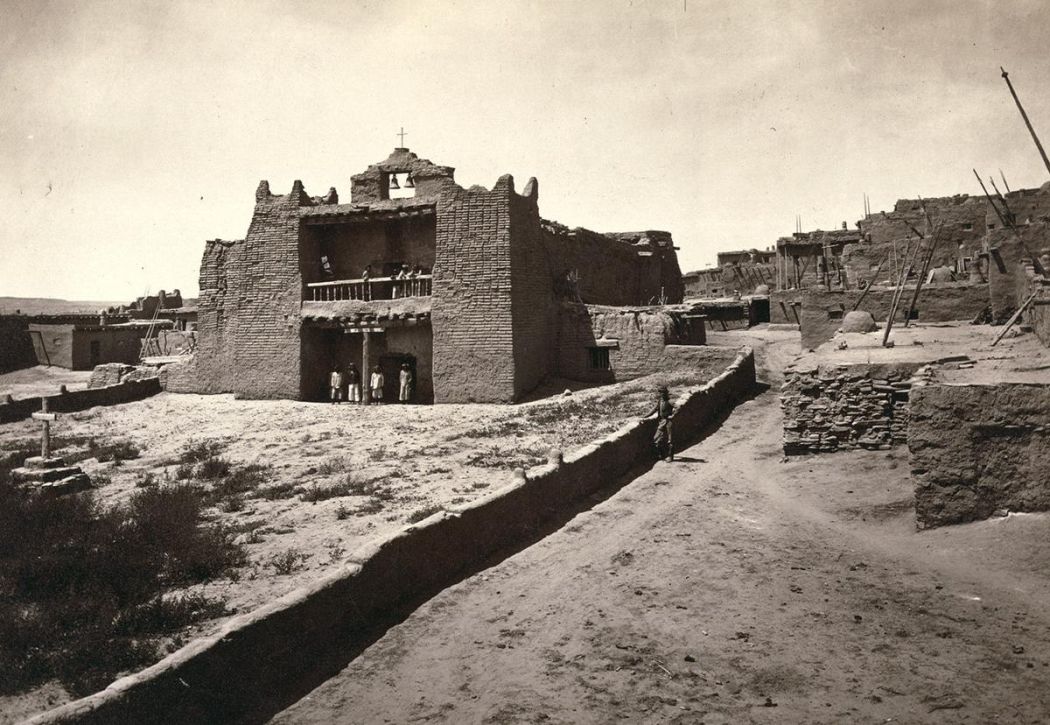
Old Mission Church, Zuni Pueblo, New Mexico. View from the plaza in 1873. # Timothy O’Sullivan/Library of Congress
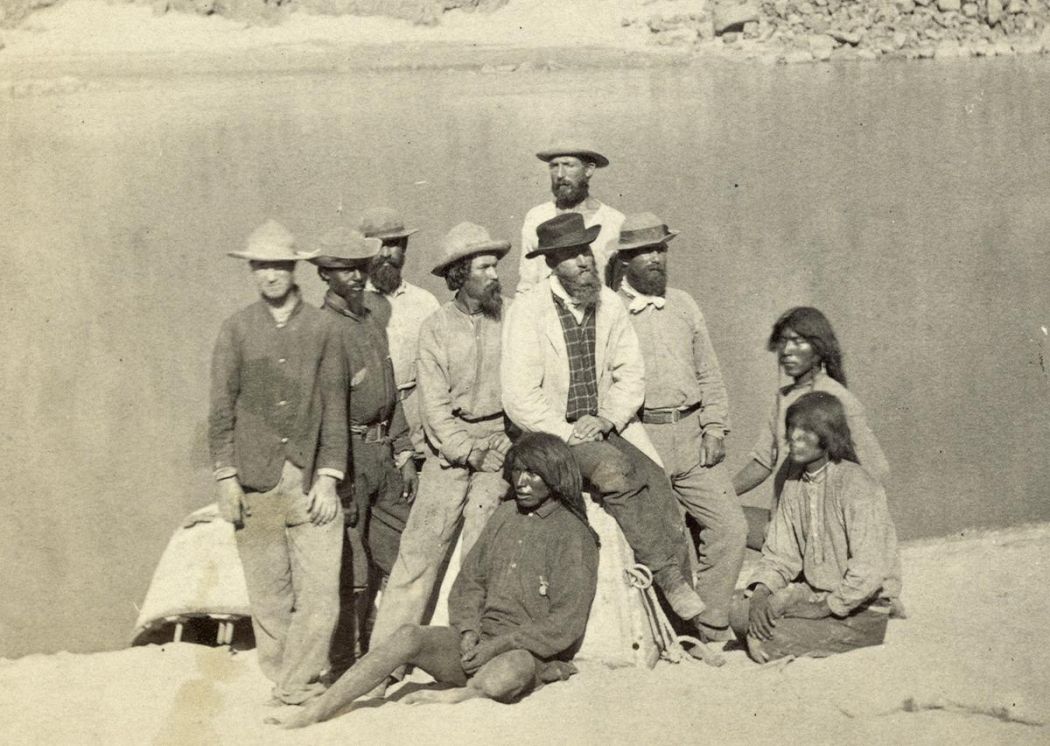
Boat crew of the “Picture” at Diamond Creek. Photo shows photographer Timothy O’Sullivan, fourth from left, with fellow members of the Wheeler survey and Native Americans, following ascent of the Colorado River through the Black Canyon in 1871 # Timothy O’Sullivan/Library of Congress
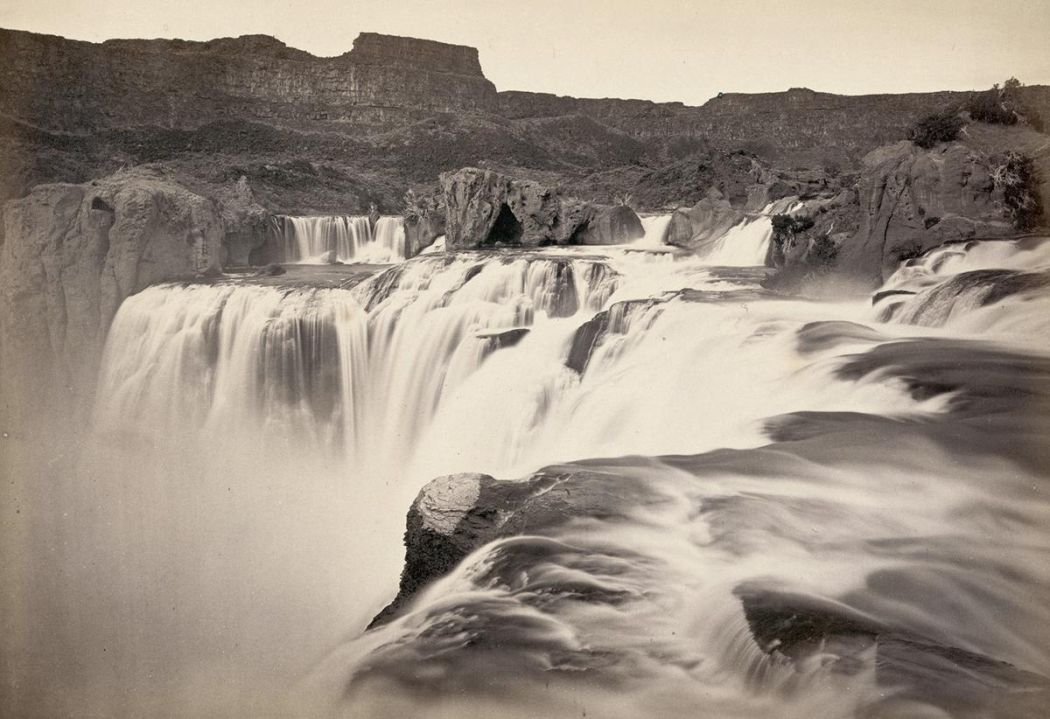
Shoshone Falls, Snake River, Idaho. A view across top of the falls in 1874. # Timothy O’Sullivan/Library of Congress

A man sits on a rocky shore beside the Colorado River in Iceberg Canyon, on the border of Mojave County, Arizona, and Clark County, Nevada in 1871. # Timothy O’Sullivan/Library of Congress
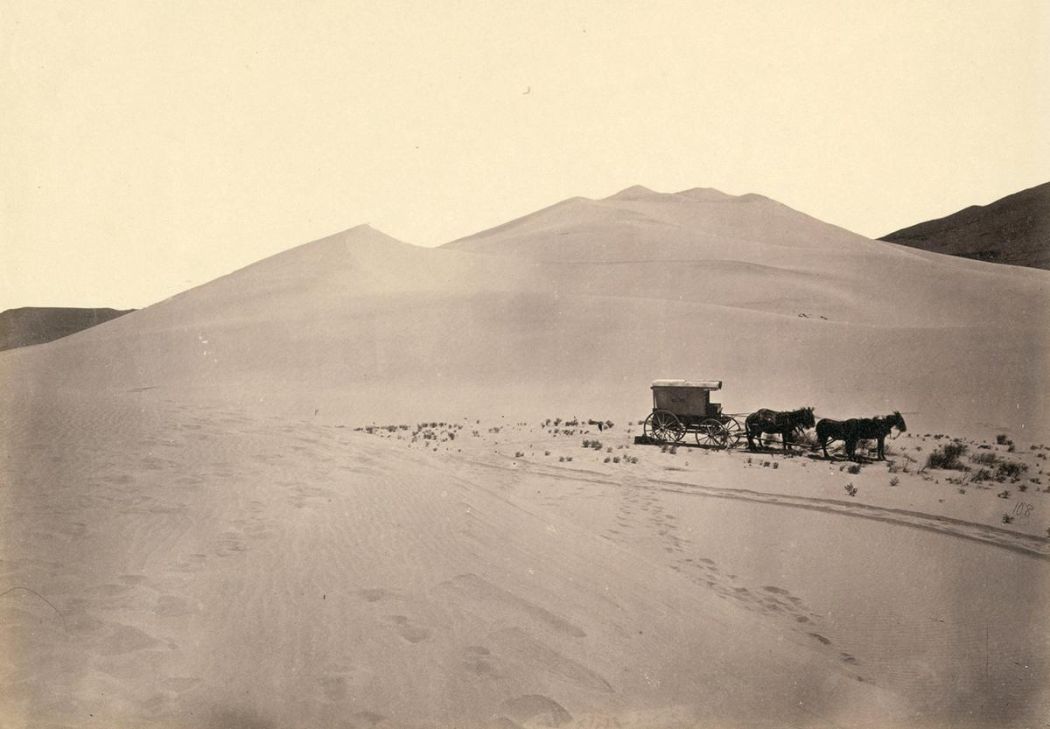
Timothy O’Sullivan’s darkroom wagon, pulled by four mules, entered the frame at the right side of the photograph, reached the center of the image, and turned around, heading back out of the frame. Footprints lead from the wagon toward the camera, revealing the photographer’s path. Photo taken in 1867, in the Carson Sink, part of Nevada’s Carson Desert. # Timothy O’Sullivan/Library of Congress
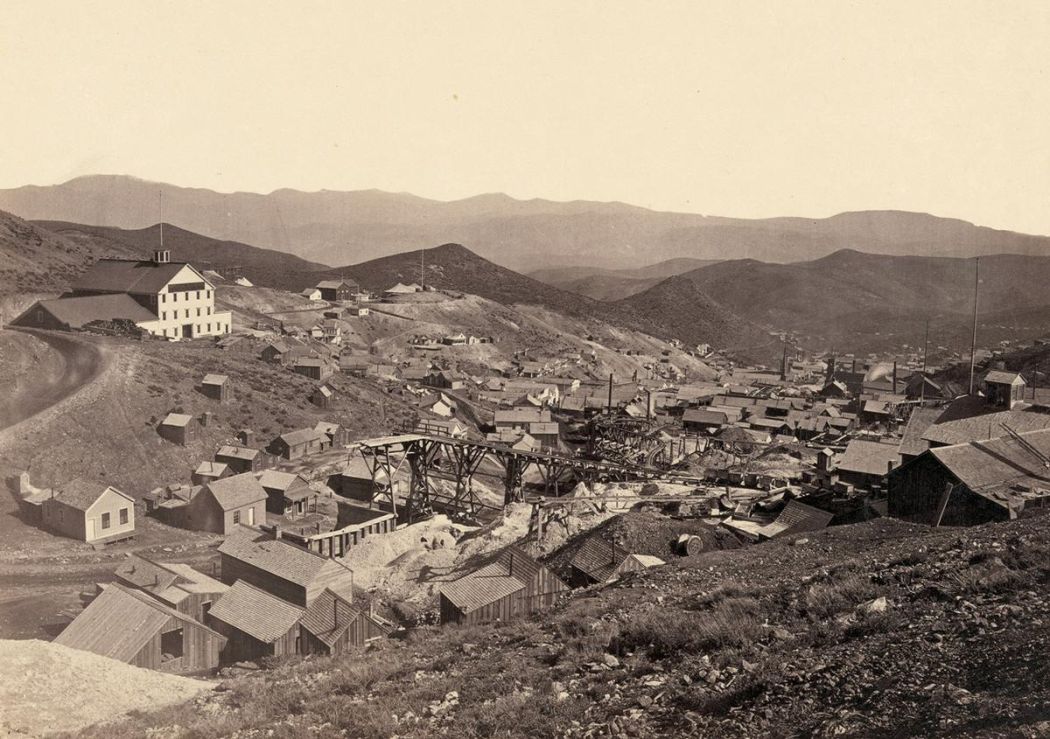
The mining town of Gold Hill, just south of Virginia City, Nevada, in 1867. # Timothy O’Sullivan/Library of Congress
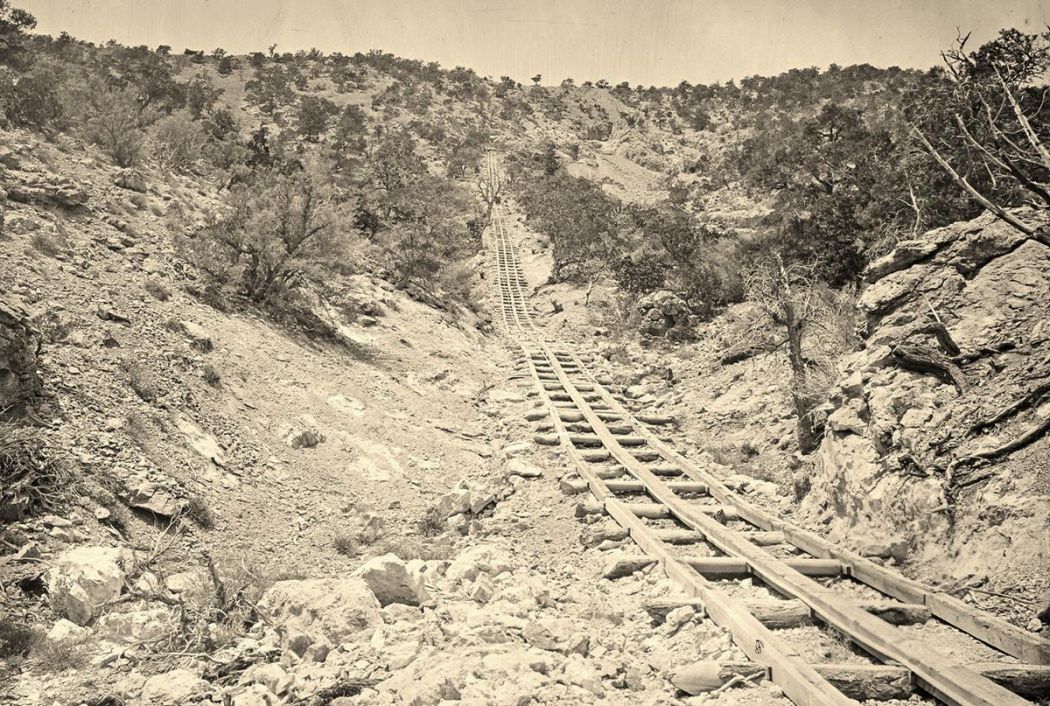
A wooden balanced incline used for gold mining, at the Illinois Mine in the Pahranagat Mining District, Nevada in 1871. An ore car would ride on parallel tracks connected to a pulley wheel at the top of tracks. # Timothy O’Sullivan/National Archives and Records Administration

The head of Canyon de Chelly, looking past walls that rise some 1,200 feet above the canyon floor, in Arizona in 1873. # Timothy O’Sullivan/National Archives and Records Administration
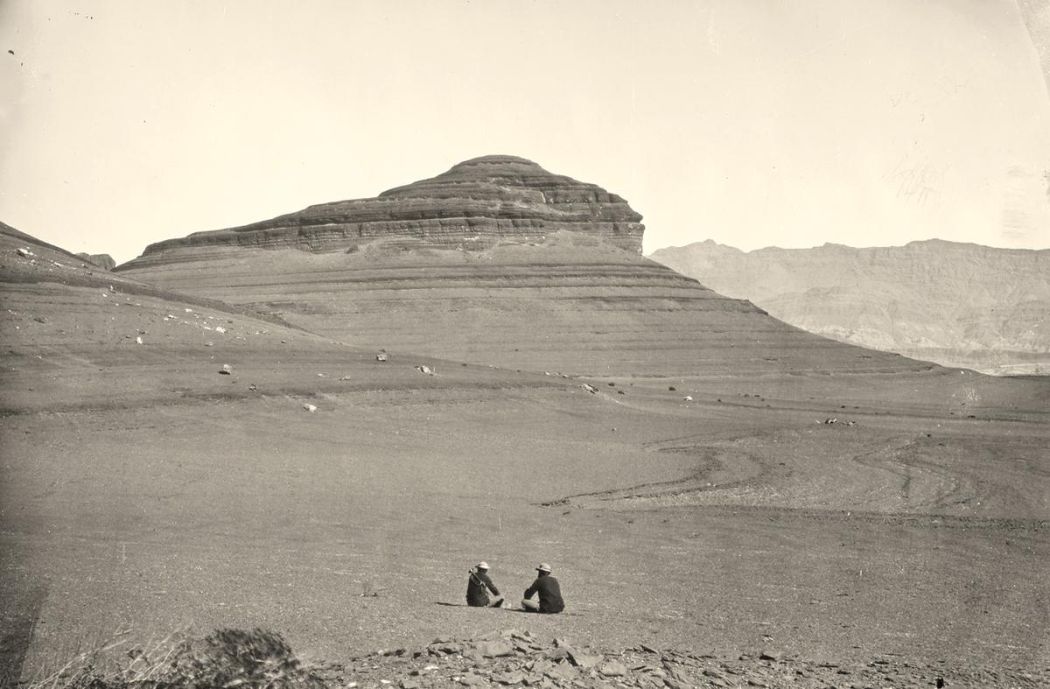
Headlands north of the Colorado River Plateau, 1872. # Timothy O’Sullivan/National Archives and Records Administration
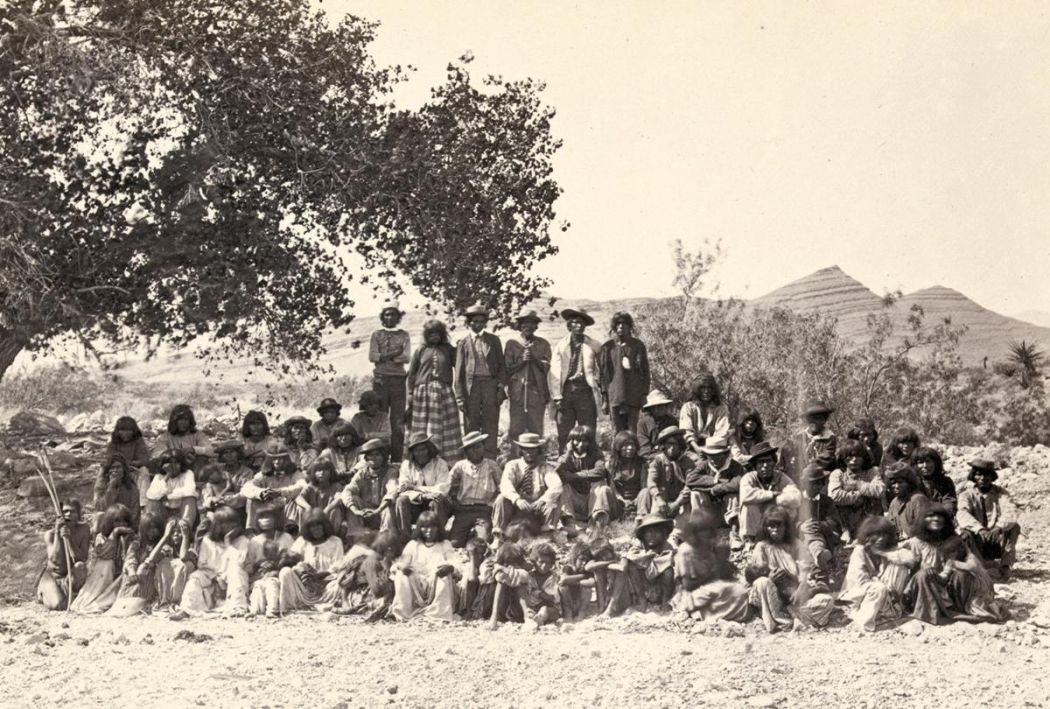
Native American (Paiute) men, women and children sit or stand and pose in rows under a tree near probably Cottonwood Springs (Washoe County), Nevada, in 1875. # Timothy O’Sullivan/Library of Congress
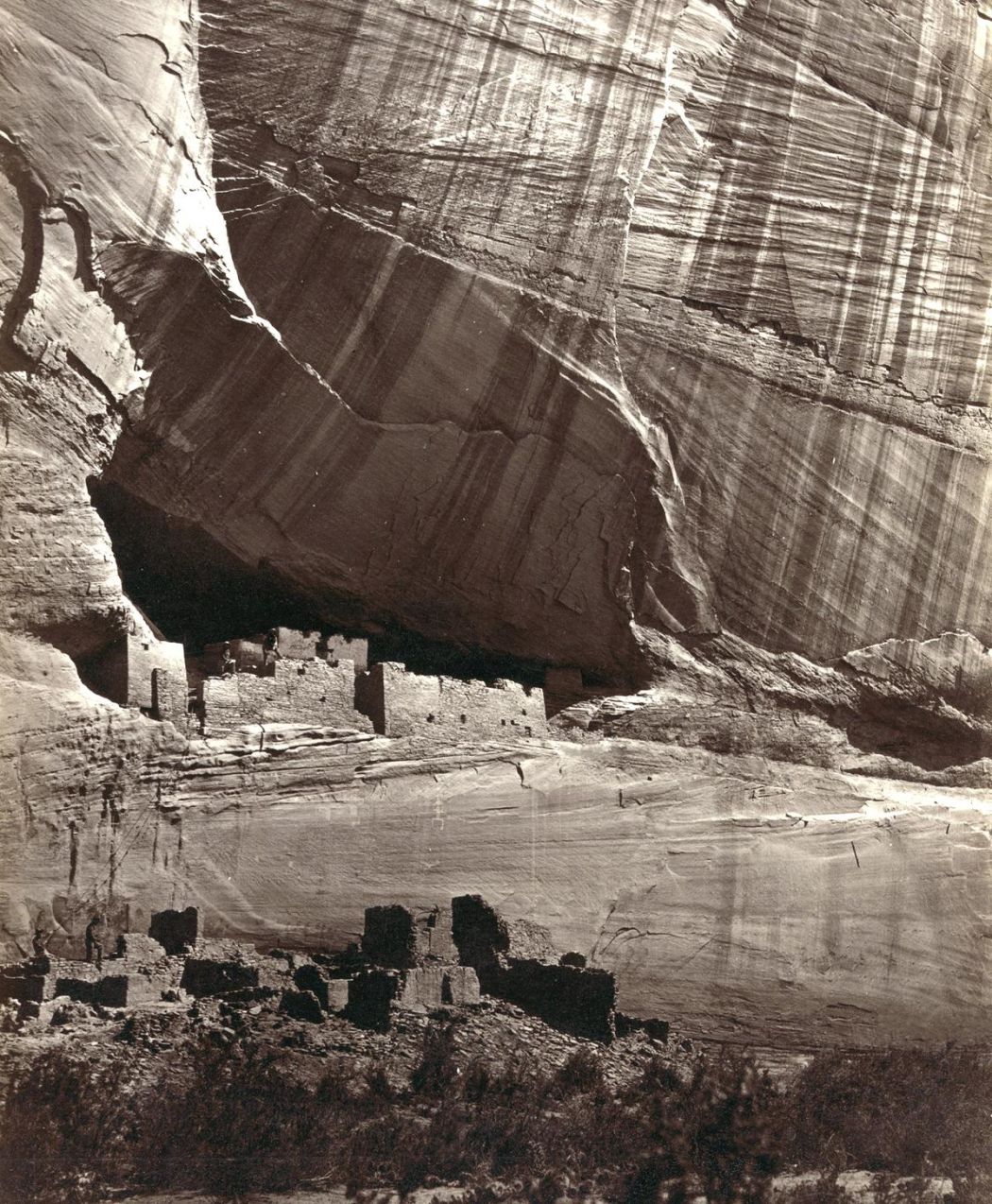
View of the White House, Ancestral Pueblo Native American (Anasazi) ruins in Canyon de Chelly, Arizona, in 1873. The cliff dwellings were built by the Anasazi more than 500 years earlier. At bottom, men stand and pose on cliff dwellings in a niche and on ruins on the canyon floor. Climbing ropes connect the groups of men. # Timothy O’Sullivan/Library of Congress
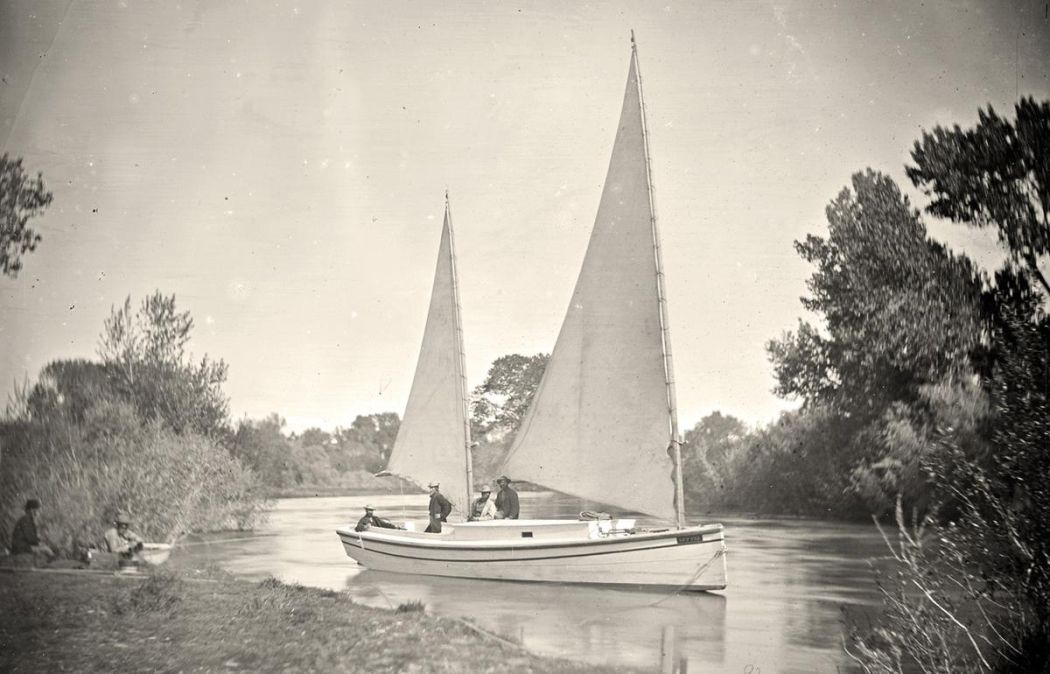
The “Nettie”, an expedition boat on the Truckee River, western Nevada, in 1867. # Timothy O’Sullivan/National Archives and Records Administration
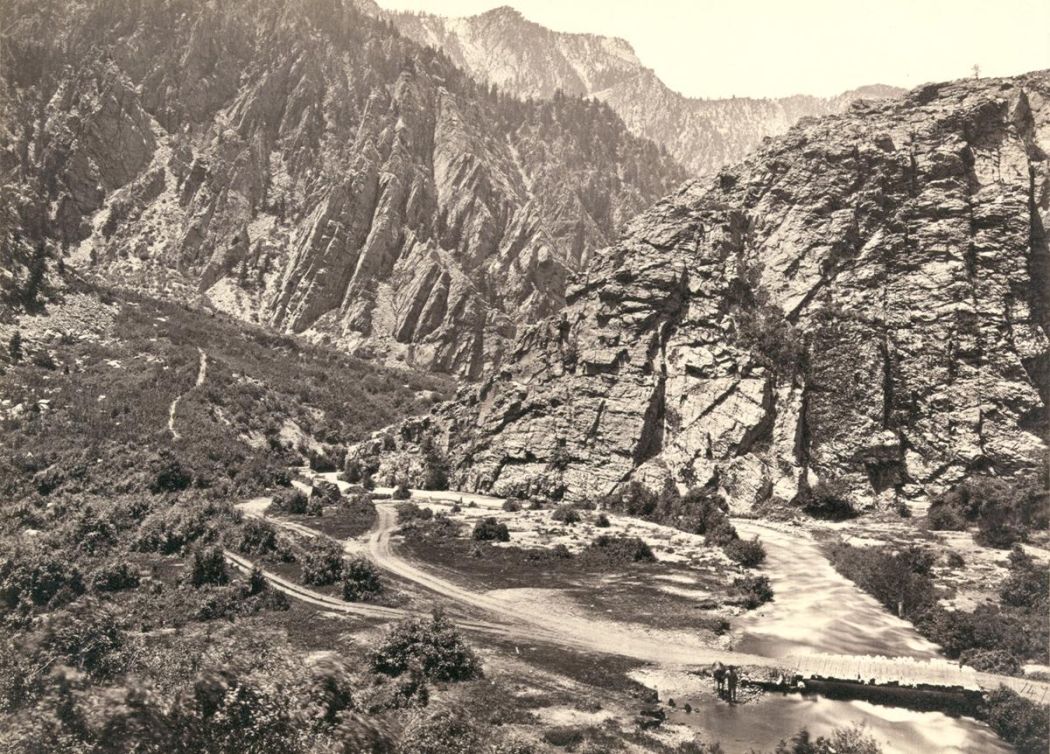
Big Cottonwood Canyon, Utah, in 1869. Note man and horse near the bridge at bottom right. # Timothy O’Sullivan/Library of Congress
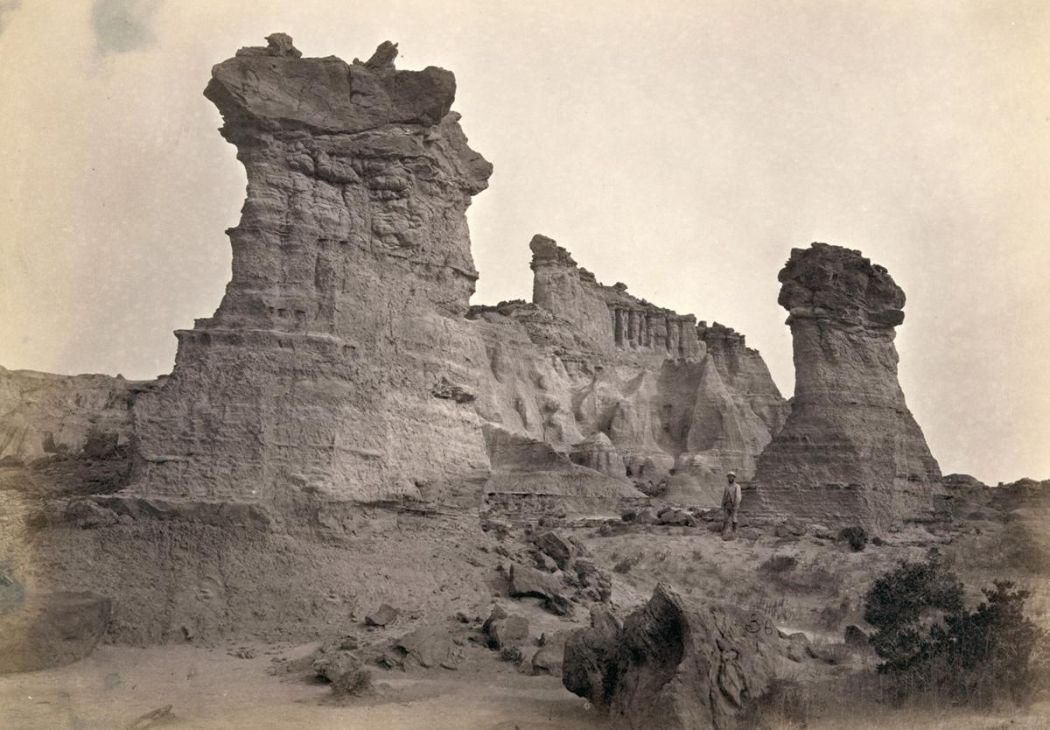
Rock formations in the Washakie Badlands, Wyoming, in 1872. A survey member stands at lower right for scale. # Timothy O’Sullivan/Library of Congress
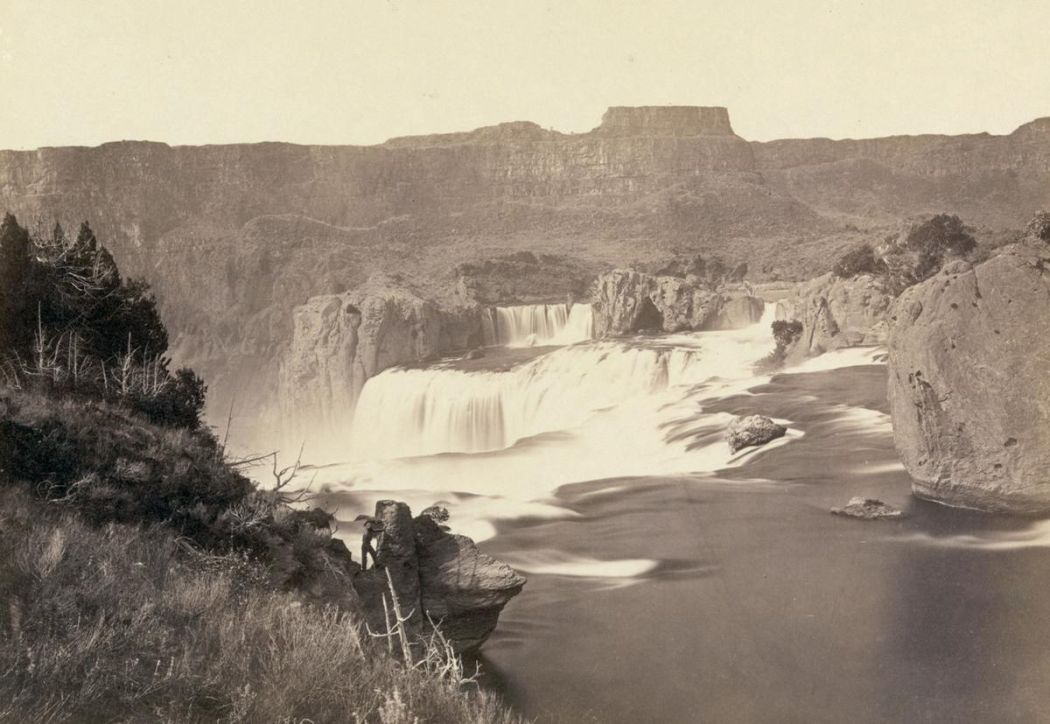
Shoshone Falls, Idaho, in 1868. Shoshone Falls, near present-day Twin Falls, Idaho, is 212 feet high, and flows over a rim 1,000 feet wide. # Timothy O’Sullivan/Library of Congress

The south side of Inscription Rock (now El Morro National Monument), in New Mexico in 1873. Note the small figure of a man standing at bottom center. The prominent feature stands near a small pool of water, and has been a resting place for travelers for centuries. Since at least the 17th century, natives, Europeans, and later American pioneers carved names and messages into the rock face as they paused. In 1906, a law was passed, prohibiting further carving. # Timothy O’Sullivan/Library of Congress
via The Atlantic

